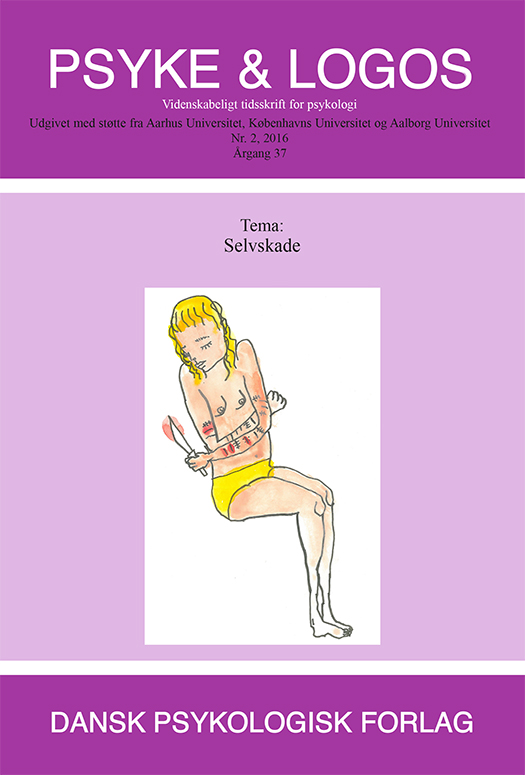Nya perspektiv på självskadebeteende
DOI:
https://doi.org/10.7146/pl.v37i2.25680Abstract
It is commonly assumed that non-suicidal self-injury (NSSI) functions as a way of regulating emotions. But if so, which kinds of emotions are regulated by NSSI? And why have these persons chosen this particular form of emotion regulation? The purpose of the present paper is to discuss these questions on the basis of recent research. Research with
ecological momentary assessment suggests that NSSI is primarily a way of expressing and regulating aggressive feelings towards oneself and others. Other research indicates that individuals who self-injure often have a strongly self-critical attitude, and that this leads both to a reduced pain sensitivity and to an experience of deserving to be punished. The existence of contagion effects youth, as well as the contents on certain webpages, which suggests that NSSI may be seen as a socioculturally existing “technology of the self” in Foucault’s sense. A possible contributing factor is that self-care in our culture sometimes tends to be seen as something “narcissistic” in a negative sense. In line with this, some research indicates that adolescents who injure themselves tend to experience an aversion to self-compassion and to compassion from others. Empirical results indicate that an increased mindfulness, acceptance of emotions, and mentalizing skills, can counteract NSSI; it would be interesting to study if the effects can be further improved by incorporating components of “self-compassion” into treatment.
Downloads
Published
How to Cite
Issue
Section
License
Ophavsret er tidsskriftets og forfatternes. Det er gældende praksis, at artikler publiceret i Psyke & Logos, som efterfølgende oversættes til andet sprog, af forfatteren frit kan publiceres i internationale tidsskrifter, dog således at det ved reference fremgår, at den oversatte artikel har et forlæg i en dansksproget version i Psyke & Logos. Artikler kan frit deles og linkes til på forsknings- og undervisningsnetværk (så som Blackboard). Link foretrækkes, fordi det giver oplysning om brug af tidsskriftets artikler.




